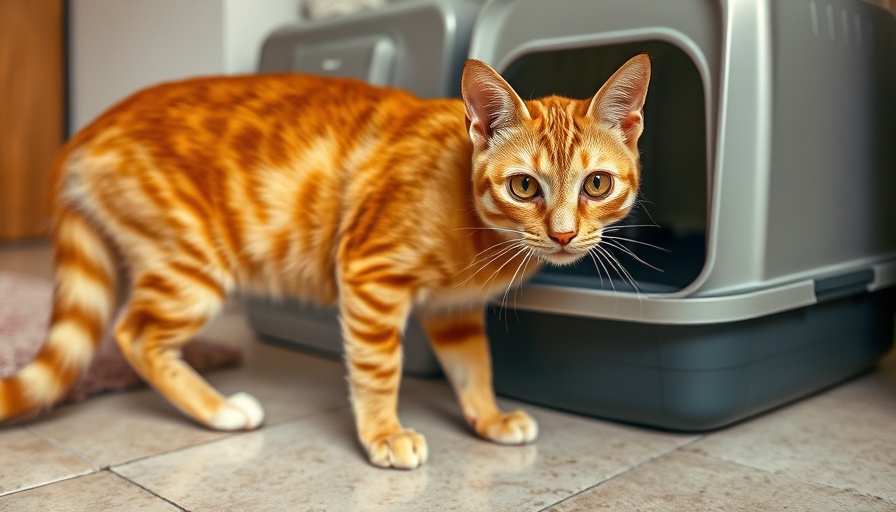
Understanding Common Litter Box Challenges: A Closer Look
It’s a widespread belief that cats instinctively use their litter boxes, but various challenges can complicate matters. When feline friends choose elsewhere to relieve themselves, owners often wonder why this behavior occurs. Rather than viewing it as misbehavior, it's crucial to recognize that these actions often stem from their innate desire to communicate discomfort or dissatisfaction. Explore common litter box issues to better understand the situation.
1. Medical Concerns: The First Place to Start
Before assuming your kitty is simply being obstinate, it’s essential to rule out any medical issues that might be at play. Conditions such as Urinary Tract Infections (UTIs) are serious and can lead to significant discomfort. A cat writhing in pain while trying to urinate or displaying unusual behavior might be in distress.
Additionally, Feline Interstitial Cystitis often affects younger to middle-aged cats and can lead to inflammation of the bladder, presenting symptoms like blood in the urine. Moreover, Bladder Stones can cause dangerous blockages and are medical emergencies if not treated promptly. As a best practice, getting your furry friend checked by a vet should always be the first course of action when litter box problems arise.
2. The Importance of a Clean Litter Box
Another significant factor contributing to unwanted potty behavior is the state of the litter box. Cats are clean creatures by nature and prefer to do their business in a hygienic environment. If they find their litter box dirty or unappealing, they’re likely to search for alternative spots, such as your bed or the floor. Regularly scooping the litter box and using high-quality clumping litter greatly aids in maintaining cleanliness.
Moreover, to ensure optimal sanitation, thoroughly strip the litter box down and clean it weekly using a mild soap or a diluted vinegar solution. Avoid harsh chemicals like bleach or ammonia, which might deter cats and cause harm if ingested.
3. Exploring Unconventional Factors
Have you ever considered external factors that might lead to litter box troubles? Consider changing household dynamics, such as the introduction of new pets, which can cause anxiety. Cats are territorial beings and may retreat to an unfamiliar territory if they feel threatened. Additionally, even slight variations in litter type or litter box design can trigger these issues.
Think of it as your cat's way of giving feedback. Experimenting with different litter boxes, such as covered versus uncovered, can help you pinpoint their preferences.
4. Recognizing Behavioral Signs
When a cat begins to avoid their litter box, consider their behavior as communication. Highlighting positive reinforcement training and socialization can create a more comfortable environment. Engaging with your cat through play or providing safe spaces can help reduce anxiety, encouraging them to use their designated potty area. Carrying out behavioral checks—observing changes like increased hiding or sudden outbursts—can reveal reasons behind these actions.
5. Proactive Measures: What Can You Do?
For veterinarians and veterinary technicians, it’s vital to guide pet owners in understanding and addressing these issues promptly. Presenting solutions aids in reducing the likelihood of ongoing problems:
- Regular Vet Check-ups: Remind cat parents to schedule frequent health evaluations to catch any potential issues early.
- Adaptive Environmental Changes: Encourage pet owners to evaluate their home environments in terms of stressors like noise or busy household activities.
- Creating a Calming Space: Recommend investing in calming cat products, such as pheromone diffusers, to reduce stress.
- Consulting with Behaviorists: Advise reaching out to feline behaviorists for personalized support, especially in multi-pet households.
6. Closing Thoughts: Importance of Compassion and Understanding
Ultimately, litter box issues are often complex interactions of health, behavior, and the environment. By understanding these facets and providing tailored solutions, we not only enhance our cats' health and well-being but also strengthen the bond we share with them. Recognizing and addressing litter box challenges is not just crucial for your cat’s comfort—it’s vital for enriching the overall pet-parent relationship.
Whether you're a veterinarian, trainer, or just a concerned pet parent, your knowledge plays a strong role in nurturing happier, healthier lives for our feline companions. So next time you encounter litter box troubles, remember: it’s not just a nuisance; it’s a conversation waiting to happen.
 Add Row
Add Row  Add
Add 




Write A Comment